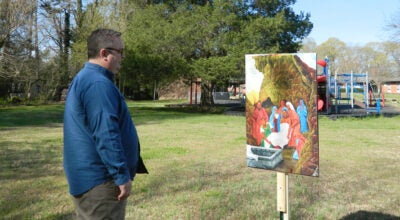Descending to sea level: A couple of beach trips
Published 12:00 am Monday, June 30, 2014
Growing up, I knew only the North Carolina mountains as summer vacation spots, not the beach. These were mostly day trips to Tweetsie and Grandfather Mountain. Sometimes, an overnight stay at my paternal grandparents’ home in North Wilkesboro was combined with a mountain trip, and if not, it became a “foothills” trip.
I’ve only descended to sea level twice. First, to Holden Beach when my daughter Rachel was around 4 or 5 years old in the early 1980s.
That vacation was a “group effort,” made up of my little family and a host of in-laws (but positive). We stayed in my wife’s cousin’s beachfront home.
The pier at Holden seemed to be the longest in the world, its length seemingly added to by the fact that it was the first I had seen. In this “dock of the bay,” the bay was the Atlantic Ocean.
Being afraid of water, I just enjoyed looking for shells (preferring the sea’s “solid” pleasures to its “liquid” ones). One time, I waded into the tide a little, just for technicality’s sake (to say that I had been in). Some people feel drawn to the ocean, but the tug I felt was a little scary.
I found some smaller conchs, but mostly the obligatory little clam shells, along with many broken pieces, smoothed by polishing in the surf. On one late evening walk under the pier, my bare feet rather than my hands discovered a mass of broken, unpolished, sharp shell fragments. After that, I wore flip-flops.
I saw my first sand flea — in fact, hundreds of them — scurrying to rebury themselves as a wave went back out.
My brother-in-law caught a blue crab, said he was going to cook and eat it but changed his mind.
We visited that little marvelous seafood town (and style of sea food preparation) Calabash. Calabash has a town council, and I bet that one topic appears frequently on its agenda: fish. While there, I didn’t see the late Jimmy Durante’s paramour, but if I had, I would have also bidden her a “good night.”
We drove down to Myrtle Beach, saw the great band organ, and visited the Ripley’s Believe-it-or-Not Museum. There, I saw a “mermaid” consisting of the head of a monkey and the body of a fish (Darwin gone awry). We also saw a display of the costumes of some of the native peoples of the earth. This greatly complemented the early 1920s exotic aura associated with such men as Ripley, Howard Carter, and Halliburton (Richard, not Cheney).
An especially interesting part of Ripley’s included several scale copies of great architecture built with match sticks, giving different meaning to the term “stick built.”
One melancholy sighting on Holden Beach always remains in my mind: a beached jellyfish. We saw it in “puffed” glory one morning, but after several hours of hot sun, only a purplish-blue “shadow-stain” remained in the sand.
The other beach trip was to Emerald Isle around 1989 when Rachel was 12 and Jeremy was 5.
Jeremy got a little plastic whale at the gift shop of the Pine Knoll Shores Aquarium. At the aquarium’s entrance were great whale bones, off the beach but still bleaching in the sun.
Jeremy made a shoebox-house for his whale and took it down to the ocean one day. Jeremy removed the whale from its dry home and placed it at the ocean’s lapping edge, then quickly picked it up, as if he were afraid the sea might recognize such a familiar shape and lay its claim.
One day, we saw a plane trailing an advertising banner. I thought of the wonderful John Candy movie, “Summer Rental,” but unfortunately, I didn’t get to transform a fish restaurant into a regatta contender (or fly my pants).
My thoughts on the way back to the Piedmont were the same following both beach trips. Seeing the comparatively great inward geographical extent of the white, sandy soil, I reflected that over the course of millions of years, the ocean had gone back and forth over the land many times, covering and uncovering it.
Deep under that sandy soil, some of it long-planted with crops, lay hundreds of thousands, possibly millions of buried, unclaimed seashells from hundreds of thousands, possibly millions of mornings before there was anyone to walk the beach and pick them up.


